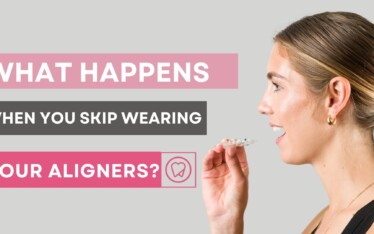Do I have gum disease?
What is periodontitis?
Periodontitis (or periodontal disease) is a bacterial infection and chronic inflammation of the soft tissues, ligaments and bones that surround and support your teeth, collectively known as the periodontium.
Periodontal disease is considered by the World Health Organisation (WHO) as one of the most significant global problems of oral disease, with the other being dental caries (tooth decay). Severe periodontitis is now recognised as being the sixth most widespread disease of mankind. Periodontitis is the final outcome of gum disease, it cannot be reversed and often has serious and long lasting consequences for your teeth and gums including tooth loss.
In the early stages of periodontitis, most patients are usually not even aware of any problems and so it may be a surprise when they are diagnosed by a dental practitioner. However, as the disease progresses patients may complain of bleeding gums, especially when brushing, bad taste in their mouth or awareness of teeth feeling wobbly/loose. If periodontitis is not treated, it can result in the loss of teeth and function which can negatively impact a patient’s quality of life. Statistics show that 37% of the adult population suffer from moderate levels of chronic periodontitis. Various risk factors have been highlighted for periodontal disease including poor oral hygiene, tobacco use, diabetes, genetics, poor nutrition and stress.
Local risk factors
Local risk factors can either be developed (such as plaque build-up due to poor oral hygiene, or poorly executed and/or aged dental restorations) or anatomical (such as poorly positioned teeth, enamel defects, root grooves or concavities). During a dental examination at the practice, it is essential our clinicians identify these factors and plan to either try to correct them or educate the patient about home oral hygiene measures.
Systemic risk factors
A number of systemic diseases or conditions can affect the periodontium in a generalised manner. These can be variable, such as smoking, or non-modifiable, such as ageing or a genetic predisposition to gum disease.
Diabetes
Poorly controlled diabetes increases the risk of periodontal diseases. Wound healing is affected by diabetes, especially if the diabetes is poorly controlled. Severe gum disease can make diabetes harder for the patient to control or increase the complications of diabetes in the heart and kidneys. In addition, high blood sugar levels in diabetes can make gum disease worse. if gum disease is treated successfully it may improve the control of blood sugar in diabetes and may also reduce additional complications of diabetes.
Stress
Stress is known to affect both the overall general health and periodontal health of patients. Prolonged or intense periods of stress can cause suppression of the immune system which increases the bacterial interaction causing gum disease. Stress also affects how well people look after themselves and that might lead to less effective daily plaque removal when tooth brushing, increased tobacco-use and poor nutrition. Asking patients about their stress levels at a dental examination may seem unnecessary, but recording this in their notes is important. Making patients aware of the potential effects of stress on their general and oral health may be sufficient for patients to think about stress management. Discussions with patients about the implications is important and consideration should be given to modifying the treatment plan to provide additional supportive care or delaying complex treatment such as implant placements or oral surgery.
Medication
Certain medications are known to cause gingival overgrowth. If drug-related gingival overgrowth is suspected, it is vital to liaise with medical colleagues such as GP’s to determine if alternative drug therapies are available and appropriate, especially if overgrowth is severe or not reducing despite the patient’s best efforts at good plaque control and effective professional scaling and cleaning.
Other considerations
Hormonal changes are known to affect the gingivae, most notably during pregnancy. During this time, a greater emphasis on daily effective plaque removal and professional debridement should control periodontal health. It is a common misconception that pregnancy causes gum disease. This is not strictly the case however there is evidence that the gums have a heightened reaction to any bacteria present in the mouth when pregnant due to a weakened immune system.
Gum disease and heart disease
There is evidence that in patients with severe gum disease, bacteria from the diseased pockets under the gums can enter the blood stream and trigger low levels of inflammation in the blood stream and spread to the body in general. Across a patient’s lifetime this seems to increase the risk of developing heart disease.
Emerging evidence
Although the evidence is not conclusive for alcohol abuse, obesity, lack of physical activity and poor nutrition, they may be important factors and are recommended to be included in overall periodontal health advice. As healthcare professionals, it is vital that we identify and make patients aware of the risk factors that might affect their health. A thorough and detailed medical history and examination should allow us to identify and document these risk factors so they can be considered in the treatment planning stage. It may seem like you complete a medical history questionnaire frequently at the dentist, but this is very important in identifying causes for disease.
Tobacco and periodontal health
One of the most important known risk factor for periodontitis is smoking. Smoking has a significant impact on periodontitis development, treatment response and the likelihood of the disease relapsing. People who smoke are more likely to produce plaque which can lead to gum disease. The gums are affected because smoking causes a lack of oxygen so the diseased gums can’t breathe and heal. Smoking also causes people to produce more plaque causing gum disease to worsen quicker than in non-smokers. Tobacco use is directly related to a number of medical problems. As health care professionals, we take any opportunity to encourage patients to quit smoking.
Smokers are up to six times more likely to show periodontal destruction than non-smokers, show a poorer response to treatment and are at increased risk of relapse. This is thought to be due to a reduction in gingival blood flow, impaired blood cells defences, impaired wound healing and an increased inflammation. Many studies have shown that persistent smoking leads to greater tooth loss and reduced response to periodontal therapy. Therefore, patients should be advised that even smoking 1-4 cigarettes a day increases their risk of developing periodontitis by almost 50%. Smokers often display:
- Greater calculus (hardened plaque) formation
- Higher pocket depths (gum around the teeth)
- Greater gum recession
- Greater bone loss
Smoking cigars, cannabis and other smokeless tobacco products regularly carries a similar risk to that of cigarettes. The recent development of e-cigarettes means that the relative effect of these, compared to traditional cigarettes has yet to be investigated but new research emerging seems to suggest that the effects might similar to conventional smoking.
Several studies have shown that smokers do not show as good a response to periodontal treatment (even in the presence of good oral hygiene) as non-smokers. Smokers are also twice as likely to lose teeth in the longer term.
At your initial examination appointment, your clinician will perform a periodontal screening. Careful assessment of the periodontal tissues is an essential component of treatment. Whilst probing using dental instruments is crucial for detecting disease, our clinicians will also assess and record tissue health visually. Our clinicians look at the gingival tissues for health and signs of disease such as redness and record the location of these changes which helps to focus oral hygiene instruction.
Radiographs
Radiographs are used to aid diagnosis and help determine the likely prognosis of the general dentition or specific teeth which is why x-rays are taken at the initial appointment and routinely thereafter. The frequency of the radiographs is determined by the clinical presentation and patient history which can also be invaluable for treatment planning and monitoring the long-term stability of general and gum health. Radiographs can also be useful to track changes in bone levels over time. Clinical need should determine the frequency of repeat radiographs.
Treatments with our gum expert
Basic gum therapy is usually the initial approach for managing patients with gum disease, following periodontal assessment with our periodontal practitioner who will diagnose and treatment plan accordingly. The final phase is to reassess (where decisions about further treatment, maintenance or surgical therapy are considered). In the initial assessment, plaque retentive factors such as calculus and poorly placed dental restoration should be highlighted and planned to be dealt with. This will ultimately decrease the likelihood of disease progression. Basic therapy is highly effective for most patients with early to moderate disease. A reduction in inflammation usually tends to take place over the first six-months following treatment. Obviously, these results are only achieved along with patient co-operation, particularly with good oral hygiene on a daily basis. The key elements to achieving good results are the frequency of appointments and patient cooperation.
The expected cost of the treatment will also be included in the overall treatment plan prior to any treatment taking place. Our patients are offered finance plans to help spread the cost of their treatment if they so wish.
Side effects of treatment
Patients are made aware of any potential side effects of periodontal treatment. These might include increased gum recession (as the inflamed gums recover), longer-looking teeth due to the recession, increased gaps between the teeth (black triangles) and temporary sensitivity.
How to care for your gums
Prior to brushing, use floss or interdental brushes to clean between your teeth twice a day. Then, brush your teeth twice a day for two minutes with an electric toothbrush, using a fluoridated toothpaste. Spit out the excess toothpaste, never rinse your mouth after brushing with mouthwash or water. Allow the residue paste to coat your teeth. Keeping your teeth and gums clean by removing plaque bacteria is the best way to protect against gum disease, however it is impossible to reach the spaces in between your teeth by brushing alone. Dental floss or tape or interdental brushes can help you to remove plaque build-up from between your teeth and below the gum line. If you do not remove the plaque between your teeth each day, you are missing approximately 40% of the tooth surface. If you aren’t sure how to floss or use interdental brushes just ask your dentist, hygienist or dental nurse for advice!



